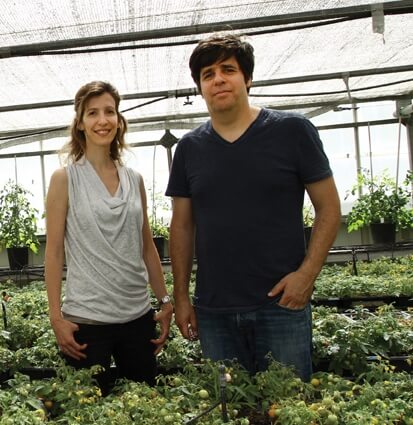Scientists from the Weizmann Institute of Science, the Technion and Tel Aviv University recently created a new metabolic model

Speed up the Piccadilly Line, delay traffic at Hyde Park Corner, send more trains to King's Cross - these are not ways to confuse commuters on the London Underground, but images that explain how plant scientists might one day work to develop new plant varieties: to optimize the In the development process, they may use models that describe plant metabolism, which are reminiscent of the London Underground map.
Building a metabolic model that simulates the network of biochemical reactions in a plant is a huge challenge, because plant metabolism is extremely complex, and thousands of enzymes participate in it. Scientists from the Weizmann Institute of Science, the Technion and Tel Aviv University have recently created a new metabolic model, the most complete to date. The computer model, which was published in the journal of the National Academy of Sciences in the USA (PNAS), focuses on a plant from the cruciferous family (which also includes, for example, mustard) called Arabidopsis, which is a common model plant in research. The system of his metabolic reactions is so wide and branched that it indeed resembles a subway map in a big city, where the lines represent chains of metabolic reactions, the stations symbolize the substances created in the sequence of these reactions, and the final stations symbolize the final products.
When scientists approach to develop a new variety of plant, which contains a greater or lesser amount of a certain substance, the model can predict that the best way to increase, for example, the production of vitamin E, is to close the appropriate "train line" - that is, to block a biochemical reaction in a particular plant, or increase the "movement" in another line - that is, speed up another reaction. With the help of this approach, known as "predictive metabolic engineering", the scientists will be able to develop desired strains quickly and efficiently, compared to the way of trial and error they used until now.
The new model was created by Prof. Assaf Aharoni and research student Shira Mintz-Oron, from the Department of Plant Sciences at the Weizmann Institute, Dr. Tomer Shlomi from the Technion, and Prof. Eitan Rupin from Tel Aviv University. Research student Sergey Malitsky and Dr. Sagit Meir from the Weizmann Institute also participated in the study.
The model was developed for the plant Arabidopsis, but it can be applied to other plants. Prof. Aharoni and his colleagues plan, for example, to develop grains - such as rice - enriched with vitamin B1. Such plants may in the future help prevent diseases caused by vitamin deficiency, especially in developing countries.
